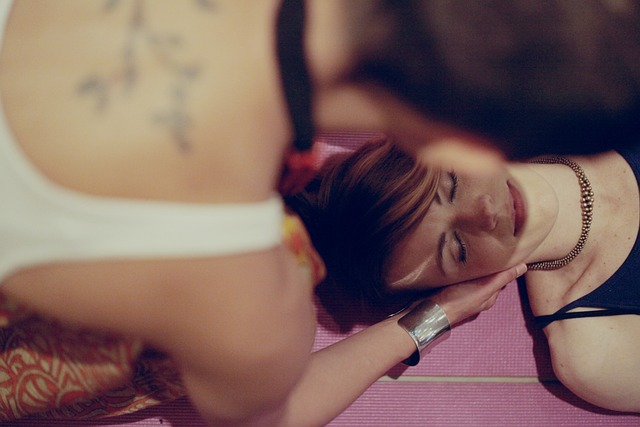Red light therapy for muscle recovery is a non-invasive, drug-free approach that reduces delayed onset muscle soreness (DOMS) by enhancing cellular repair mechanisms, increasing circulation, and promoting ATP production. This popular method among athletes and fitness enthusiasts expedites healing, alleviates pain, and complements traditional recovery techniques.
Delayed onset muscle soreness (DOMS) is a common post-exercise pain that can impact performance and recovery. This article explores an innovative solution: red light therapy, a non-invasive approach proven effective in reducing DOMS. We delve into the science behind red light’s efficacy, understanding its causes and symptoms, and how it integrates into recovery routines for faster, better muscle recovery.
Understanding DOMS: Causes and Symptoms
Delayed onset muscle soreness (DOMS) is a common condition experienced by individuals who engage in physical activities, especially those new to exercise or increasing their training intensity. It typically sets in 24-72 hours after exercise and presents as a painful, tender feeling in the affected muscles. This delayed response is characterized by visible muscle stiffness and reduced range of motion. The symptoms can vary from mild discomfort to severe pain, making it uncomfortable for individuals to move or perform everyday tasks.
DOMS is caused by microscopic damage to muscle fibers during exercise, particularly when pushing muscles beyond their typical range of motion or with increased resistance. This triggers a series of physiological responses, including inflammation and the release of metabolic waste products that contribute to the sensation of soreness. Understanding these causes is crucial for athletes and fitness enthusiasts looking for effective recovery strategies, where red light therapy for muscle recovery has emerged as a promising solution.
Red Light Therapy: A Non-Invasive Approach
Red light therapy, a non-invasive approach, has gained popularity as an innovative method for accelerating muscle recovery and reducing delayed onset muscle soreness (DOMS). This treatment involves exposing the affected muscles to specific wavelengths of red light, which penetrate the skin and stimulate cellular repair mechanisms. By increasing circulation and promoting the production of adenosine triphosphate (ATP), red light therapy helps in speeding up the healing process, reducing inflammation, and easing pain associated with DOMS.
Unlike traditional methods that often involve medication or physical therapy, red light therapy offers a drug-free, painless alternative. Its non-invasive nature makes it an attractive option for athletes, fitness enthusiasts, and individuals looking to recover from intense workouts or sports injuries. The convenience and safety of red light therapy make it a game-changer in the world of muscle recovery, providing a natural and effective way to combat DOMS.
Mechanisms Behind Red Light's Efficacy
Red light therapy for muscle recovery has gained traction due to its potential mechanisms in reducing delayed onset muscle soreness (DOMS). The efficacy of red light is attributed to its interaction with various cellular and molecular pathways. When red light is absorbed by mitochondria, the powerhouses of cells, it triggers a series of reactions that enhance cellular repair and regeneration. This includes increasing adenosine triphosphate (ATP) production, which is essential for energy-intensive processes like muscle recovery.
Furthermore, red light therapy has been shown to modulate inflammation, one of the primary contributors to DOMS. By reducing the release of pro-inflammatory cytokines, it helps mitigate the immune response that causes muscle pain and swelling. Additionally, red light stimulates collagen synthesis, which is crucial for tissue repair and maintaining muscle integrity. These combined effects make red light therapy a promising approach for accelerating muscle recovery after intense exercise or physical activity.
Integration into Recovery Routines
Red light therapy for muscle recovery has gained popularity as an effective method to alleviate delayed onset muscle soreness (DOMS). By integrating this non-invasive treatment into post-workout routines, athletes and fitness enthusiasts can experience faster recovery times and reduced muscle stiffness. The gentle illumination of red light at specific wavelengths penetrates deep into the skin, stimulating mitochondria production and enhancing collagen synthesis, both crucial for muscle repair and regeneration.
Incorporating red light therapy into your recovery regimen is straightforward. Sessions typically last for 10-15 minutes, allowing you to unwind while the lights work their magic. Whether it’s after an intense gym session or a grueling outdoor activity, this innovative approach can complement traditional recovery methods like stretching and ice baths. By consistently incorporating red light therapy into your recovery routines, you may notice improved performance and a quicker return to your active lifestyle.
Red light therapy emerges as a promising, non-invasive approach for reducing delayed onset muscle soreness (DOMS). By targeting deep tissues with specific wavelengths of red light, this method stimulates mitochondria production, enhances collagen synthesis, and promotes inflammation resolution. Integrating red light therapy into post-workout recovery routines can be a game-changer for athletes and fitness enthusiasts looking to speed up muscle repair and improve overall performance. For effective muscle recovery, consider incorporating red light therapy as part of your holistic wellness regimen.
